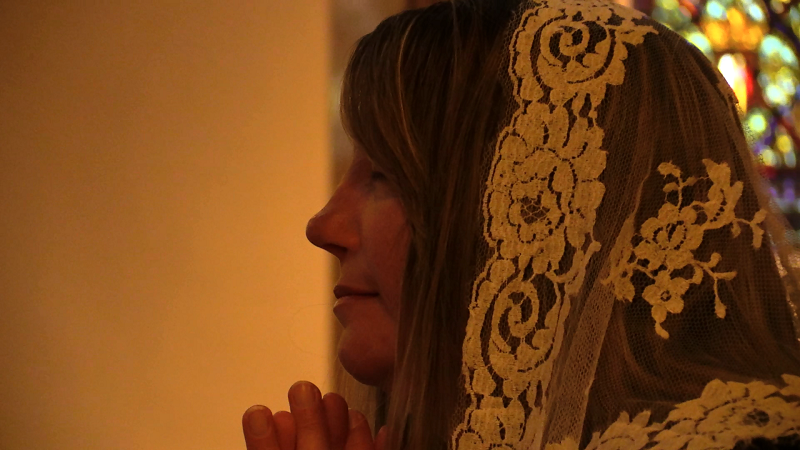Veiling at Catholic Parishes: Revisiting Tradition through Pope Benedict XVI’s Liturgical Vision
Posted by Lily Wilson

April 21, 2025 | Easter Monday
In recent years, a quiet but meaningful revival has been unfolding in Catholic parishes around the world: the return of veiling among women during the Holy Mass. While this practice is often associated with the Traditional Latin Mass, it is increasingly finding its way into celebrations of the ordinary form of the Mass. This development may seem surprising to some, but when viewed through the lens of Pope Benedict XVI’s liturgical vision, it becomes not only understandable but profoundly fitting.
Pope Benedict XVI, in his writings and papal teachings, consistently championed what he termed a hermeneutic of continuity. This phrase refers to the idea that the Church’s liturgy—and indeed all aspects of her teaching life—should be seen as a living tradition that develops organically, not as a series of ruptures or reinventions.
In his 2007 motu proprio Summorum Pontificum, His Holiness made it clear that the Traditional Latin Mass (referred to as the "Extraordinary Form") was not abrogated by the reforms of Vatican II. Rather, it remained a valid and sacred expression of the Roman Rite. He hoped that allowing wider access to the older form of the Mass would lead to what he called mutual enrichment between the two forms: the Extraordinary and the Ordinary (also known as the Novus Ordo).
“The two Forms of the usage of the Roman Rite can be mutually enriching: new Saints and some of the new Prefaces can and should be inserted in the old Missal... The celebration of the Mass according to the Missal of Paul VI will be able to demonstrate, more powerfully than has been the case hitherto, the sacrality which attracts many people to the former usage.” (Letter to Bishops, 2007)
Veiling: A Sign of Reverence
Veiling is one of the traditional practices that has reemerged alongside the renewed appreciation for the sacred. Rooted in Scripture (cf. 1 Corinthians 11:2–16) and sustained through centuries of Catholic tradition, the practice was once common at every Mass. Today, many women are rediscovering veiling not as an obligation, but as a personal devotion and a visible sign of reverence before the Eucharistic Lord.
While veiling was never formally done away with, its decline was often associated with the broader cultural and liturgical changes following the Second Vatican Council. Yet, nothing in the documents of Vatican II discouraged veiling. Its return at Novus Ordo Masses today is therefore not a contradiction but a visible embodiment of Benedict XVI’s vision of continuity, bridging the past and the present in one seamless tradition.
Liturgical Formation and Sacred Culture
Another key emphasis of Pope Benedict was liturgical formation. He urged both clergy and laity to be formed deeply in the meaning and history of the liturgy—not just as an academic exercise, but as a way of entering more fully into the mystery of faith.
“What earlier generations held as sacred, remains sacred and great for us too...” (Letter to Bishops, 2007)
In this light, veiling at a Novus Ordo Mass becomes a small but significant gesture that witnesses to a deeper understanding of sacred tradition. It calls the faithful to a spirit of humility, reverence, and participation in the liturgy that transcends eras and forms.
Beauty in Unity Through Time
Far from being a nostalgic retreat into the past, practices like veiling—when embraced thoughtfully—can embody Pope Benedict’s hope for a more reverent, unified, and beautiful liturgical life. They serve as quiet reminders that the Church’s tradition is not behind us, but alive among us.
Whether you attend the Extraordinary Form or the Novus Ordo, the call remains the same: to worship God with the fullness of mind, heart, and soul. And sometimes, that begins with something as simple and profound as a veil.
